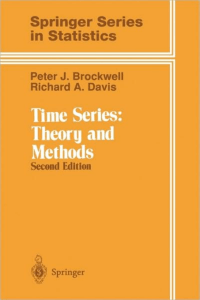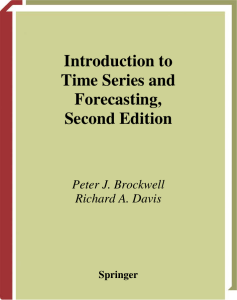State Customs Committee of Russian Federation N. Kravchenko
реклама
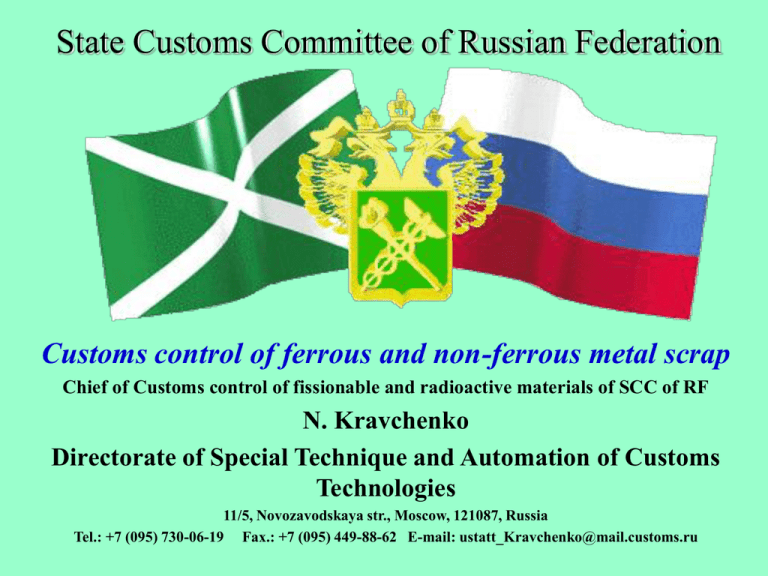
State Customs Committee of Russian Federation Customs control of ferrous and non-ferrous metal scrap Chief of Customs control of fissionable and radioactive materials of SCC of RF N. Kravchenko Directorate of Special Technique and Automation of Customs Technologies 11/5, Novozavodskaya str., Moscow, 121087, Russia Tel.: +7 (095) 730-06-19 Fax.: +7 (095) 449-88-62 E-mail: ustatt_Kravchenko@mail.customs.ru The threat of ITRM at the border can be minimized by the implementation of two tasks: – To stop the illicit trafficking of fissionable and radioactive materials across the Russian Federation border; – To organize thorough check at Customs clearance of fissionable and radioactive materials of the participants of foreign trade activities (export, import, transit, temporary import) for their identification by name and quantity declared in the documents. The following conceptual principles are used as well for solving these tasks: • 1. Radiation monitoring of all individuals, goods, and vehicles crossing the Russian Federation customs border; • 2. Priority of radiation safety activities over legal activities aiming to institute criminal proceedings against law transgressors; • 3. Effective control not deteriorating conditions for the participants of foreign trade activities; • 4. Minimization of additional personnel and funds allocation; • 5. Utilization mostly of national technical facilities. Stages of radiation Customs control No. stage Purpose Measurement Methods, instruments Results I Detection Gamma, neutron, bremsstrahlung Remote, stationary II Localization, danger evaluation Gamma, neutron, alpha, beta Remote (contact), portable III Identification Gamma IV Dose monitoring Gamma Contact, without opening of package stationary (portable) Contact, portable Qualitative evaluation “YESNO” Localization of situation of the radiation source, quantitative evaluation of radiation level Determination of isotope composition Personal (group) equivalent dose The technical facilities can be listed as follows: • • • • • • • Detection: 1. Stationary remote automatic equipment for detection of the excess in natural gamma-neutron background; 2. Portable universal radiometers of alpha-, beta-, gamma-, and neutron radiation; • Analysis: 3. Potable gamma-spectrometers for identification of fissionable and radioactive materials without opening the package; 4. Gamma-spectrometers with high-resolution semiconductor detectors for movable customs laboratories; • Personal: 5. Personal dosimeters to provide safety of the personnel; 6. Personal protection means. Algorithm of radiation monitoring at unauthorized transportation of FRM ENTRANCE I stage Detection «NO» Presence of radioactive (r/a) radiation Automated monitoring (stationary equipment) Inspected by: officer of the checkpoint «YES» II stage Evaluation of radiation danger Inspection area III stage Localization, identification Site of temporary storage Determination of the type of radiation and the extent of radiation danger Checking of the taken measures for temporary storage of goods Localization and identification (composition, enrichment) Transfer of goods to competent bodies Customs formalities EXIT Inspection of goods with portable instruments (radiometers, personal dose monitoring of the personnel) Inspected by: officer of the checkpoint Composition analysis (spectrometric equipment) Inspected by: officer of the CCFRM service; expert of special organization Approach of implementation TF DR NRM Border - Detection of minimally possible amounts of NRM with the use of gamma and neutron radiation detectors in accordance with the work technique of check posts. 1. Critical width and height of control zone: - For transport stationary TF DR NRM – width up to 6 meters, height up to 3.5 meters, carrier speed up to 15 kilometers per hour. - For pedestrian TF DR NRM – width up to 1.5 meters, height up to 2 meters, object speed up to 5 kilometers per hour. 2. Maximum automation of TF DR NRM control process, reduction of human factor influence on reliability of control. 3. Taking into account the specificity of customs service activities, which is directed to maximum economic benefits for national interests, minimization of the time of control with the use of TF DR NRM along with high reliability of control, obligatory recording of control results, provision and storage of video information about the control object. - Absence of competent body or specialized services representatives during control with the use of TF DR NRM. Possibility to implement TF DR NRM in unfavorable climatic conditions (open sites). Stationary technical facilities for detection and response to illegal trafficking of nuclear and radioactive materials implemented at borders • Typical national check post and possible places of TF DR NRM arrangement. Transport monitor stationary Transport monitor Pedestrian monitor Stationary TF DR NRM are arranged at entrance/exit of check post. Examples of placement TF DR NRM Example of placement of pedestrian TF DR NRM. Fixed, installed instruments Hand-held and pocket-type instruments Response to Alarm Activation Ответные меры при срабатывании системы обнаружения Alarm (pager, border monitor, intelligence) Сигнал (пейджер, пограничный монитор, данные из отдела дознания) False Alarm Ложное срабатывание Multi-purpose hand-held devices Универсальные ручные приборы No Отрицательный результат Verification Проверка Confirmed or Suspected Подтверждено или предполагается Assess Hazard & Locate Source Оценка угрозы и локализация источника Dangerous Опасный Safety Procedures Меры безопасности No Danger Отсутствие опасности Isolate Source Изоляция источника Notification Procedures Меры уведомления Innocent Source Активность менее МЗА Record Details Запись особенностей Identify Source Illicit Source Незаконно перевозимый источник Activate Emergency Response Plan Приведение в исполнение плана ответных мер Seize Materials Задержание источника Stop Окончание процедуры In-depth investigation Углубленное обследование Investigation Report Доклад о проведении обследования Legal Process Проведение уголовного дознания MKC-A02-1M, All-in-one Design (Aspect) •4 modes of operation: – n/g search mode – n/g dose rate indication – Gamma spectrometryisotope identification – Alpha/beta counting Detectors: NaI, He-3 (8 at) and (external detection external, thin wall, large area probe) ZnS covered plastic szintillator •Normal (4 buttons) and expert mode of operation Detection illicit trafficking of radioactive materials and goods with` a high level of radioactivity (including scrap) 1996-2003 other 19% With radiation equipments 81% Prevention of illicit trafficking of radioactive materials and goods with` a high level of radioactivity (including scrap) Import to RUSSIA and transit Export from RUSSIA 21,3% 78,7% 1. IAEA-TECDOC-1311 Prevention of the inadvertent movement and illicit trafficking of radioactive materials. 2. IAEA-TECDOC-1312 Detection of radioactive materials at borders. 3. IAEA-TECDOC-1313 Response to events involving the inadvertent movement or illicit trafficking of radioactive materials. 4. The sanitary demands of Russian Ministry of Health. The stages of scrap Customs control SCRAP (Tariff classification code: 7204, 7404, 7503, 7602 e.c.t.) Customs examination with special radiation equipment Main tasks: Customs control of cargo documents -To find out local radioactive sources; - To measure dose rate; -Selected measurement of the levels of surface contamination by alpha and beta radionuclide. - Sanitary certificate - Transport documents CRITERION: Dose rate natural background - № and Date of issue of document; - Full name of organization – recipient; - weight and kind of scrap; - Number of transport units, identification №; - Full name of Laboratory of Radiation Control provided measuring; - № of radiation protocols and dose rate; - Conations of using of scrap. All documents are present - Scrap meets sanitary demands ISSUE OF SCRAP + 0,2 µSv/h. Sanitary certificate is absent and (or) dose rate is not correspond to criterion Prohibition of issue The graph which shows how the number of cases of detection of illicit trafficking of scrap depends on the level of equipment customs houses with the radiation monitoring technique 80,00% Quantity of the found out facts 70,00% 60 60,00% the number of cases of detection of illicit trafficking of scrap 50,00% the level of equipment customs houses with the radiation monitoring technique 40 20 40,00% 30,00% 20,00% 10,00% 0 0,00% 1996 1997 1998 1999 2000 2001 2002 2003 The level of equipment customs houses with the radiation monitoring technique 80 The number of cases of scrap return from Russia to other countries and from other countries to Russia The number of cases of scrap return 80 The number of cases of scrap return from Russia to other countries 70 60 50 The number of cases of scrap return from other countries to Russia 40 30 20 10 0 1996 1997 1998 1999 2000 2001 2002 2003
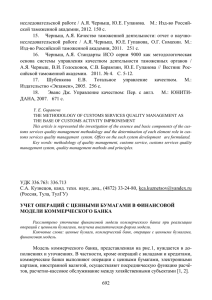
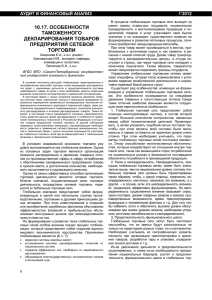
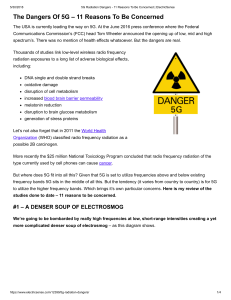
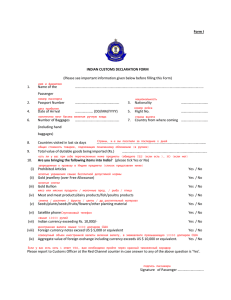
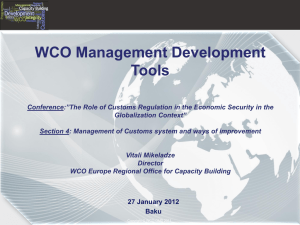
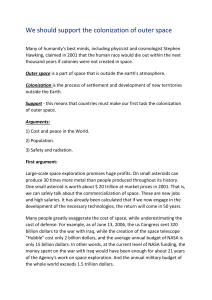
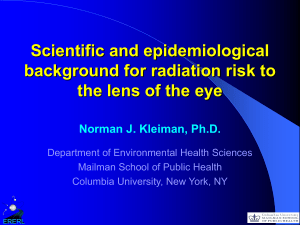

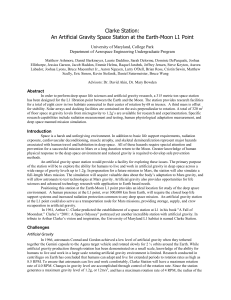
![[Bruker 2006] Introduction to X-ray Fluorescence (XRF)](http://s1.studylib.ru/store/data/006238700_1-ea3a89e73863f4e8ecf6d44604e5360f-300x300.png)
